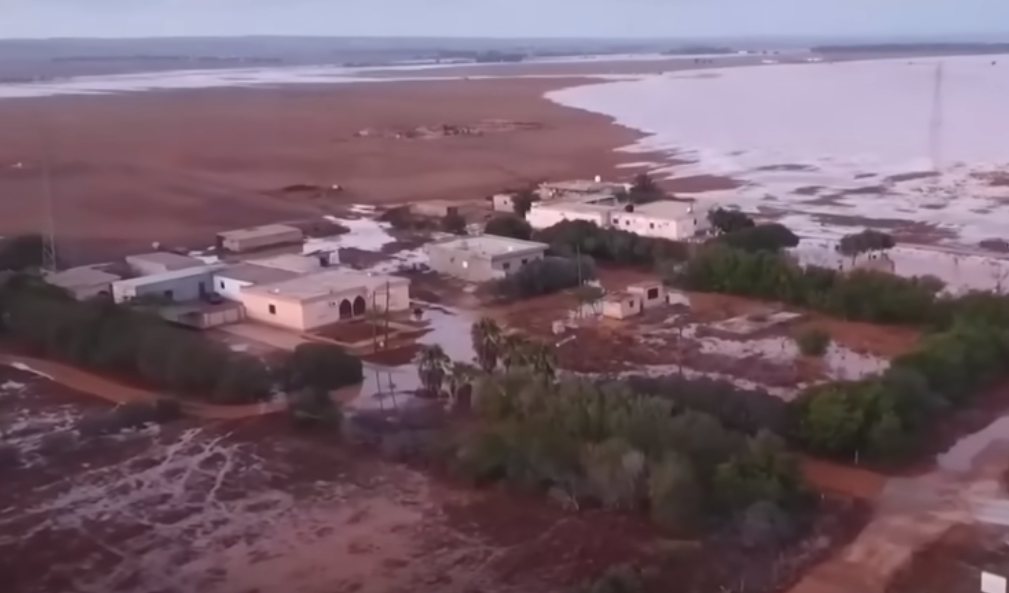For several weeks now, India has been ablaze in the sense that the capital city of New Delhi has just set a record that people detest when the temperature soared to 52.9 degrees Celsius. The good news is that the temperature is predicted to drop by 4 degrees in the Northwest and Central India in the coming days, while the bad news is that the temperature may simultaneously rise in the eastern regions of India and the Southern Peninsula. This is one of the people living in that inferno. She lives in a tent without electricity or water. Earlier this week, India recorded its first heat-related death, a worker who succumbed to heatstroke. The Delhi government has instructed construction workers to be given afternoon breaks, bus stops equipped with drinking water, and streets cooled with water sprays.

People are trying to find cool places while the demand for electricity in Delhi reaches an all-time high, and the demand for water also rises, leading authorities to implement water rationing. In some places, water is only supplied once a day because water sources are running dry, and the government is forced to do so to distribute water to areas with little or no water. In India, temperatures usually peak in May and June, and this month is forecasted to have 7 to 10 days of heatwaves in the Northwest, compared to the usual two or three days. This is the third consecutive year that India has endured severe heatwaves. The scary thing is that everything was predicted.
As early as April, the Indian Meteorological Department predicted that the southern peninsula, eastern regions, central regions, and northwestern plains of India would experience above-normal heatwaves. The most horrific heatwave in history occurred in 2015 when over 2000 people died due to extreme heat, but there are signs that this year could be even worse. Scientists have long warned of record heatwaves in India, mainly due to the El Nino effect. What is El Nino? It is a natural phenomenon resulting from the interaction between the ocean and the atmosphere, originating from abnormally warm waters in the eastern Pacific Ocean.
In the Pacific Ocean under normal conditions, the trade winds blow along the equator from east to west, carrying warm water from South America to Asia. Therefore, the trade winds affect the sea areas where the sun heats the water at a normal rate, creating large waves that warm the surface water and allow cold water from the depths to mix into the ocean. When the trade winds weaken, warm water from the warm surface of the Western Pacific Ocean quickly flows eastward, causing the sea temperature in this region to abnormally rise.
In the case of India, El Nino has abnormally warmed the ocean surface, along with a high-pressure system blocking warm sea winds from the Bay of Bengal and the Arabian Sea, leading to record high temperatures in many parts of India this year. El Nino has become the keyword of global meteorology in 2023, the year Earth experienced its hottest year in 125 years, with the annual global average temperature rising by 1.45 degrees Celsius compared to the pre-industrial era. 2023 is a year of many sad weather and climate records, with record-breaking heatwaves, including July 2023 being recorded as the hottest month in the past 120 years.

The summer of 2023 witnessed many records being broken in the Asia-Pacific region, with Laos breaking all-time records with a temperature of 42.5 degrees Celsius, and Beijing, China's capital, experiencing a prolonged and intense heatwave with nearly 10 consecutive days of temperatures exceeding 35°C. In the Antarctic, temperatures also rose to nearly 9 degrees Celsius. Heatwaves also caused devastating wildfires on the islands of Greece, considered the most severe forest fire in Europe, burning over 70,000 hectares of land. In September 2024, Hurricane Daniel made landfall in Libya, bringing unprecedented heavy rains that breached dams and led to catastrophic flooding. The floods devastated a city and claimed at least 5000 lives. California in the United States was put on rare snowstorm alert, forcing officials to urge residents to stay indoors. Temperatures in San Francisco dropped to a record low of 4°C, accompanied by over 8 cm of snowfall. These are just a few of the many extreme weather disasters in 2023 associated with El Nino.
Asia is the most disaster-prone region in the world, with climate-related disasters such as floods and typhoons causing the highest casualties here.
In 2023 alone, 79 climate-related disasters were recorded in Asia, mainly floods and typhoons, resulting in over 2000 deaths and affecting 9 million people. It seems that was not enough, so it was decided that 2024 would be even hotter, with a 99% chance of being one of the top 5 hottest years ever. This is because El Nino usually has the greatest impact on global temperatures after peaking. In 2023, it peaked, so 2024 is expected to be the hottest year.

The good news is that the El Nino forecast is expected to end in the first half of 2024, replaced by La Nina. To explain quickly, you just need to understand that La Nina is the opposite phenomenon of El Nino, where abnormally cold surface waters in the ocean occur. Compared to El Nino, La Nina is expected to be milder in terms of temperature, meaning it will bring much cooler climates and more rain to some areas on Earth. This is particularly important for agricultural regions like our country, especially after a year of El Nino-induced drought. The bad news is that La Nina could bring heavy rains to coastal areas. In the history of La Nina, a storm in 1998 caused a terrifying disaster that still haunts survivors to this day. A super typhoon with wind speeds of up to 5 caused 22,000 deaths and disappearances, 2.7 million people lost their homes. For Vietnam, during La Nina years, the number of storms in the East Sea and their impact on our country is about 28% higher than usual.
The storm season during La Nina years ends later than usual, with most La Nina events causing above-average rainfall in many years in the coastal provinces of Central and Southwestern Vietnam, while the Northern Coast, Central Highlands, and Southeastern regions suffer from rainfall deficits. It is noteworthy that most La Nina events have caused record-breaking rainfall in 24 hours and consecutive rainfall deficits in some places, especially during La Nina years, river flows are often much larger than average for many years. In some years, some large rivers have increased by 80 to 100%, significantly increasing the risk of flooding. El Nino and La Nina are generally cyclical climate phenomena that we cannot prevent. However, the impact of natural climate phenomena like El Nino and La Nina is increasingly amplified as the Earth warms. In recent decades, when it comes to weather, one keyword is repeatedly mentioned: abnormality. Each day, weather events become more difficult to predict, evidenced by the consecutive years of natural disasters causing record casualties.

The butterfly effect is increasingly attracting attention, where a butterfly flapping its wings in the Amazon rainforest of Brazil can trigger a tornado in Texas, USA. This shows the interconnectedness of all things in nature, where even a small variable can cause a significant consequence. In recent years, the variables are not small at all, with the polar ice caps melting at an unprecedented rate. All these factors, and more, could make weather phenomena like El Nino or La Nina more unpredictable than ever before, and humans always have to be prepared.
An example is the early arrival of floods in Southern China, with thunderstorms bringing warnings of water levels in some major rivers in Guangdong province reaching a once-in-a-century level. Heavy rains have caused landslides, resulting in at least four deaths, 10 missing persons, dozens of collapsed and severely damaged houses, and many roads being impassable. More miraculously, from India being scorched to China being engulfed in massive floods, we call these abnormal phenomena, but in reality, everything was predicted in advance, so their occurrence is not surprising.
But they certainly surprise those who have to experience them directly because these are events that we have never experienced before, or weather phenomena that last longer, are more intense, or repeat more frequently in a year. Prepare yourself to no longer be surprised by being surprised even more.
